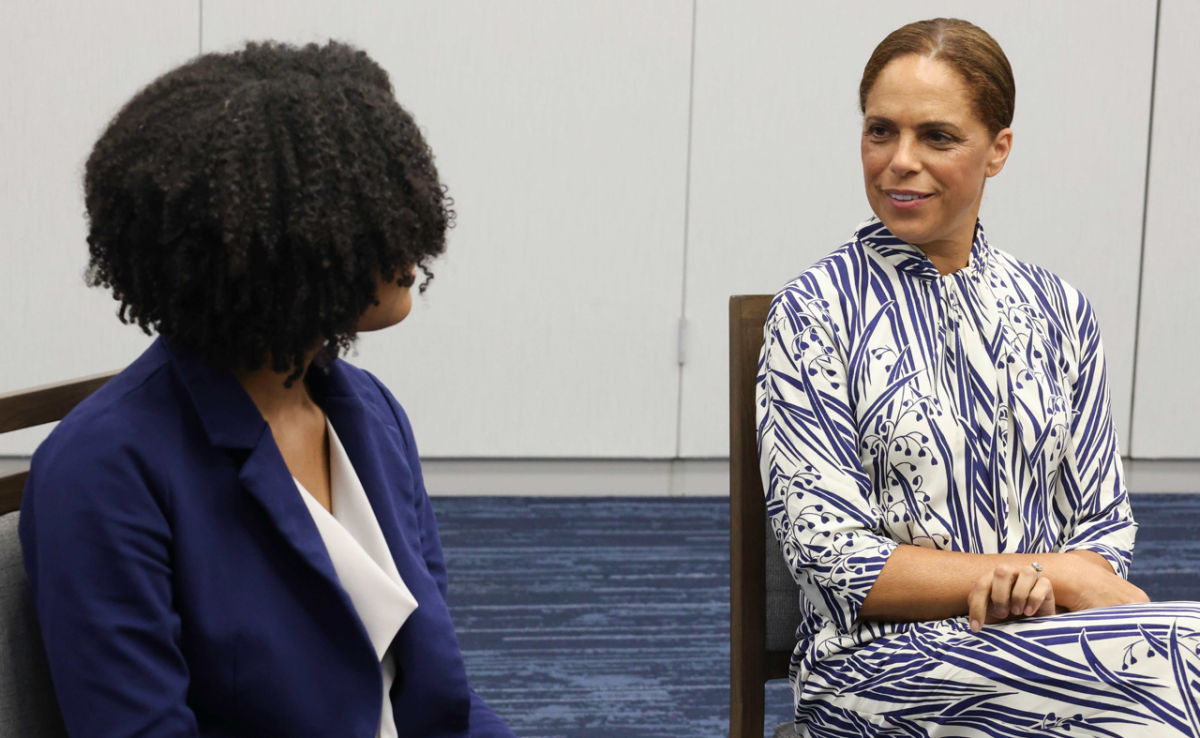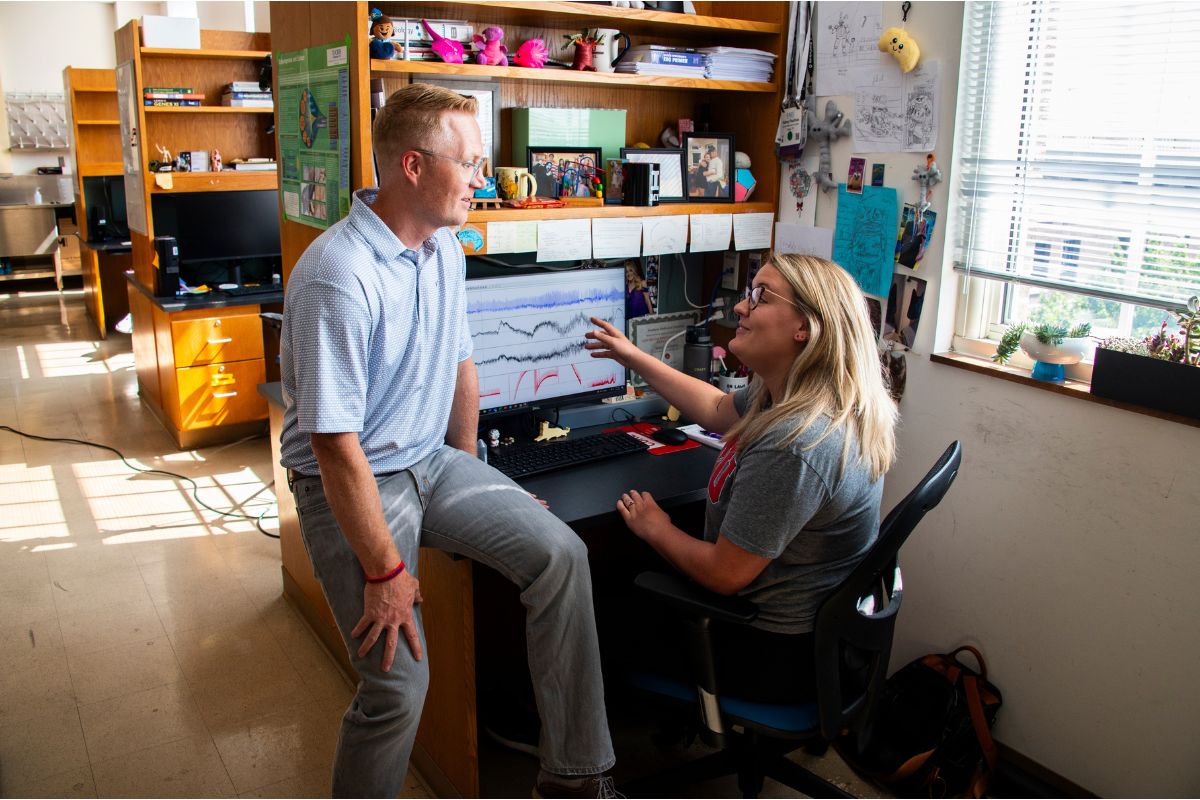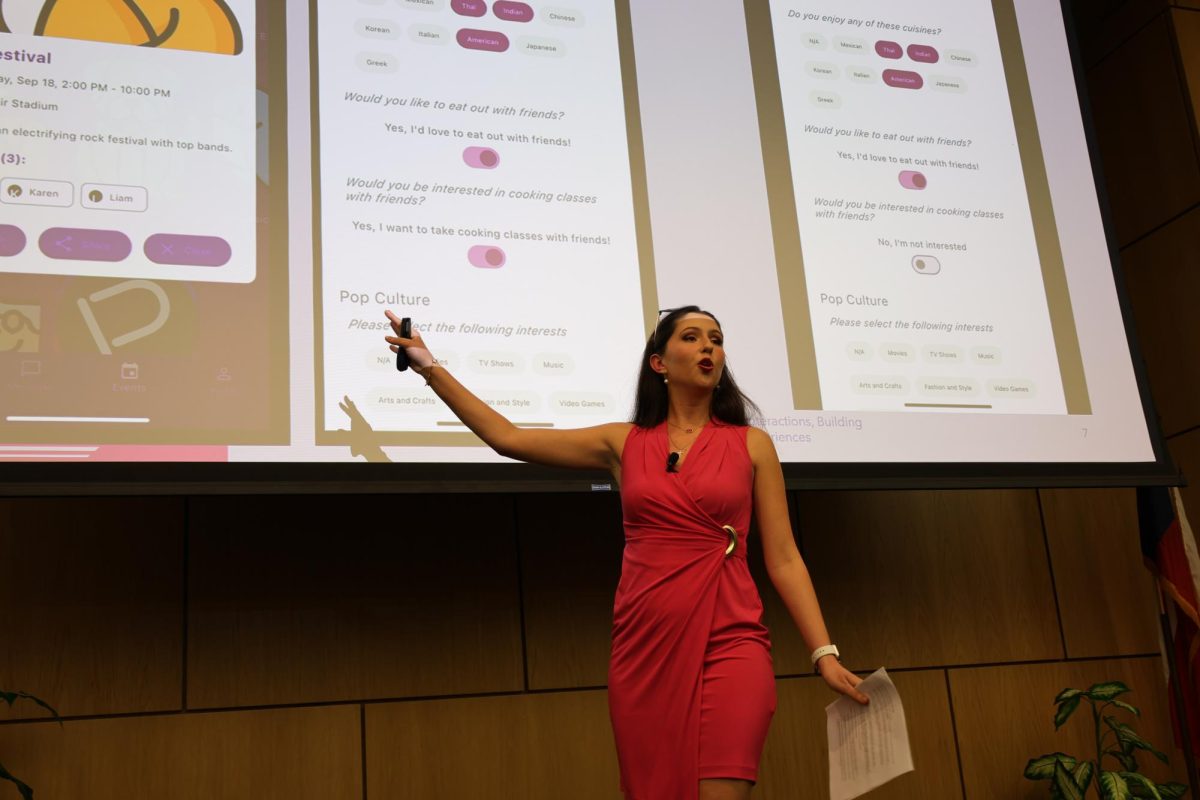From day one on the Hilltop, students are taught about the traditions that make SMU special. The chants and cheers, school colors, fight songs, and a Shetland pony named Peruna… all of these lend themselves to the campus life and school spirit. But perhaps the most unique tradition at SMU is pony ears.
“Pony ears are a unique tradition in that not many people understand the significance of it other than alums and current students,” SMU cheerleading captain Ashley Whisnant said.
Pony ears are the hand symbol SMU students make with their hand to show support for their teams while watching football and basketball games.
Traditionally, after SMU sporting events, players and fans stand, sing the alma mater, “Varsity” and circle their pony ears above their heads for the number of years they have been at SMU.
“For me, I affiliate pony ears with my great experiences with cheerleading,” Whisnant said. “It can symbolize good luck during an important play during a game or when one of our players is injured, but it also symbolizes respect for our school when we sing ‘Varsity.’”
While the tradition is strong today, the history of the hand symbol has a deep history.
Hand symbols are not a new trend, especially among Texas football teams.
According to Texas Monthly’s Paul Burka, the advent of hand gestures originated at Texas A&M, when in 1930, Pinky Downs, a member of the university’s board of regents gave his thoughts on the Aggies’ upcoming game with Texas Christian University. When asked what the Aggies were going to do to the Horned Frogs the next day, Downs shouted “Gig ‘em!” appropriating a term used for frog hunting. With his thumb pointing straight up, and his hand in a fist (as if holding a frog Gig, a pronged spear used for catching frogs) Downs added this gesture as he shouted the phrase. The first hand symbol in Texas was born.
By 1955, the University of Texas was looking for its own tribal-like symbol. The “Hook ‘em, Horns” symbol would evolve, emulating the head and horns of bovine mascot Bevo by holding the index and pinky fingers straight up, while the middle and ring fingers and thumb were held in a fist.
SMU was next to adopt a hand gesture. According to former Mustang football player Charles Terrell, class of ’59, during the 1958 season, a crisis developed between players and then-head coach Bill Meek and his staff. The discrepancy escalated to the point where the team told the coaches that it would only communicate to the coaches through captain Tom Koenig. The team adopted a two-finger “V for Victory” hand symbol as a sign of unity among themselves.
“The symbol had everything to do with victory and unity, and nothing to do with pony ears,” Terrell said. “For some reason, it was picked up by the student body and fans.” Terrell also said he thinks that the practice that has grown from the ’58 season is a fine tradition.
One of the reasons a similar symbol was adopted was SMU cheerleader Roy Bailey, a member of the class of 1976. Bailey was the designated “mike man,” (microphone man) who responsible for pumping up the crowd. Because both the football and basketball teams were very competitive, Bailey felt that SMU needed a symbol.
“The whole idea was to create a tradition with a positive symbol,” Bailey said. “SMU needed a symbol because other great schools had them like Texas A&M, Baylor and others.”
He also explained that he had grown up in Waco and had followed the Baylor Bears as a kid.
“They always put up their bear claw on kickoffs and when they sang the alma mater, ” Bailey said.
Baylor’s claw was created in 1960 by a member of their cheer squad.
“We started holding up our pony ears in either 1974 or 1975, and the whole cheer squad assisted in the effort and it caught on… it’s hard to believe that it has become part of SMU’s tradition and has been used now for over 30 years,” Bailey said.
Whether Bailey knew about the football team’s problems in the late ‘50s is unclear, but the ex-cheerleader is given credit for making the two-finger “V” more curved.
“The crimped fingers were used to better replicate Mustang ears, which are kind of floppy.” Bailey said.
However, Terrell doubts that when Bailey and his cheerleaders brought back the hand symbol, that many had even heard of the problems on the team between the coaches and players.
“Probably by the time Roy was there [in 1972], no one even knew about the victory symbol,” Terrell said.
Today, Bailey’s legacy lives on at SMU in the form of his daughter, Britain, a senior member of Pi Beta Phi.
Britain and other students continue to fly their pony ears during cheers, chants, kickoffs and, of course, the alma mater, “Varsity.”








